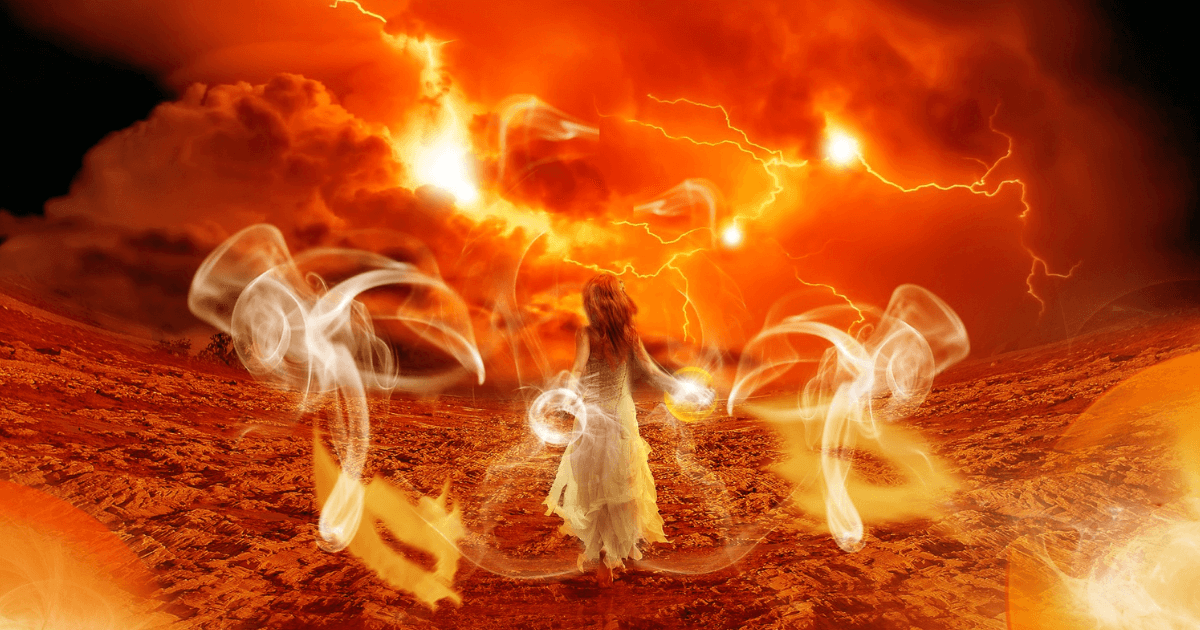
Ah, fantasy literature…
My absolute favorite.
The genre is vast and captivating, transporting readers to realms brimming with magic, mythical creatures, and epic adventures.
Within this genre, high fantasy and low fantasy stand as two prominent subcategories, each offering unique experiences and storytelling methods.
Understanding the differences between high and low fantasy can help you and your readers appreciate the nuances of each style and select the right elements for your narratives.
What Is Low Fantasy?
Low fantasy is a subgenre of fantasy literature where magical elements intrude upon the real world.
Unlike high fantasy, which unfolds in entirely fictional worlds, low fantasy is set in the familiar, often modern world. The magical or fantastical elements in low fantasy are usually more subtle and less pervasive, making the extraordinary stand out against the mundane backdrop of everyday life.
In low fantasy, the focus is often on how magic or supernatural occurrences affect ordinary people and their lives. The stories typically explore themes of conflict between the mundane and the magical, questioning reality and the unknown.
This subgenre often blends fantasy with elements of horror, thriller, or mystery, adding layers of suspense and intrigue.
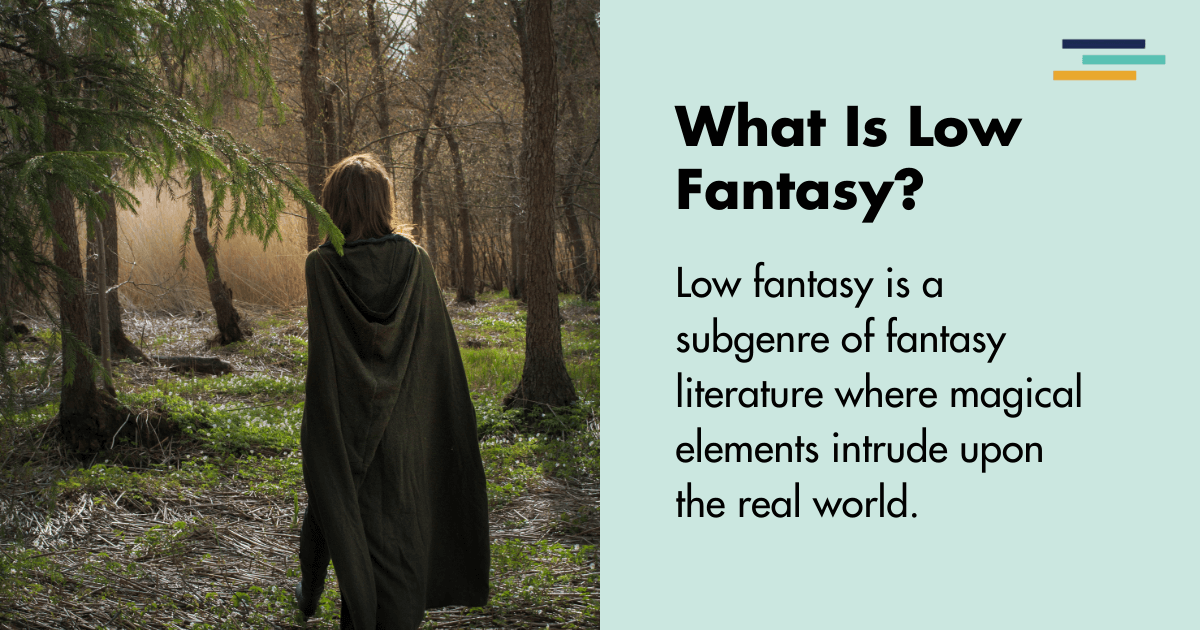
What Is High Fantasy?
High fantasy, also known as epic fantasy, is a subgenre of fantasy literature that takes place in entirely fictional worlds.
These worlds are often intricately crafted with their own histories, geographies, and mythologies. High fantasy narratives typically involve grand, sweeping storylines where the fate of entire worlds or civilizations is at stake.
High fantasy stories often feature complex plots, a large cast of characters, and elaborate settings. The protagonists in high fantasy are frequently heroes on epic quests, battling against dark forces or fulfilling ancient prophecies.
The genre is known for its rich world-building and the extensive use of magic and fantastical creatures. The themes often revolve around good versus evil, heroism, and the struggle for power.
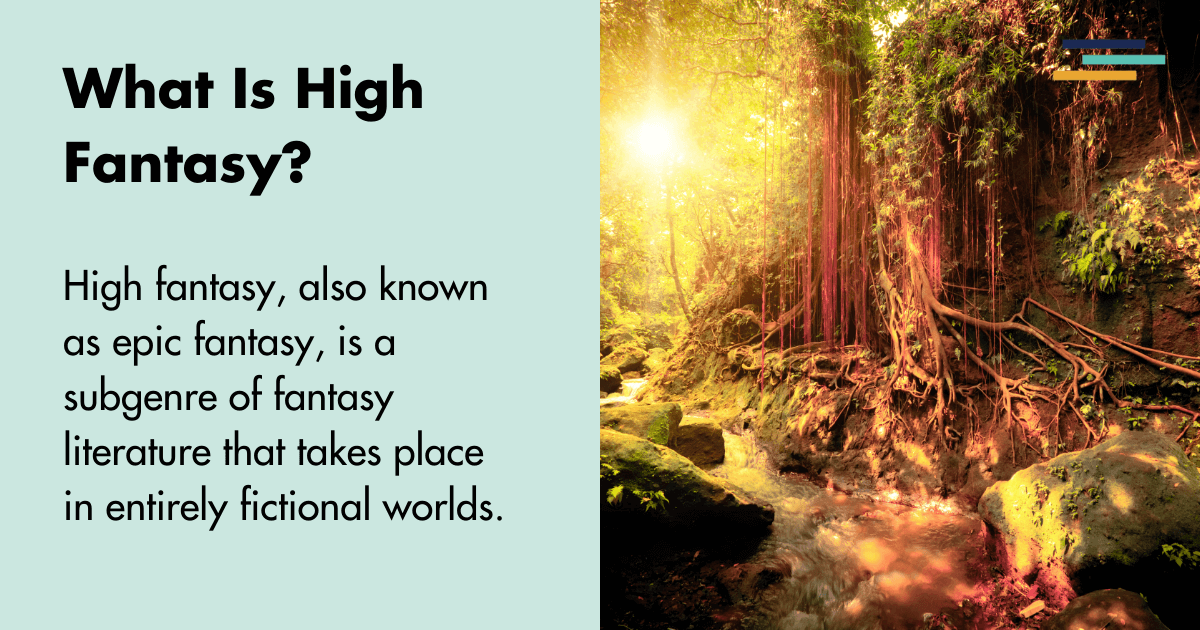
Is ACOTAR High Fantasy?
Sarah J. Maas’s A Court of Thorns and Roses (ACOTAR) series is often classified as high fantasy.
The series takes place in the fictional land of Prythian, which is divided into various courts ruled by the powerful High Fae. The world-building is extensive, with detailed descriptions of the different courts, their politics, and the magical creatures that inhabit them.
The protagonist, Feyre, embarks on an epic journey filled with magic, romance, and battles, which are hallmarks of high fantasy.
The Main Differences Between High vs Low Fantasy
The key differences between high fantasy and low fantasy lie in their settings, themes, and the nature of their magical elements:
Setting
- High Fantasy: Takes place in entirely fictional worlds with their own unique geographies and histories.
- Low Fantasy: Set in the real world or a world very similar to ours, with magical elements intruding upon the mundane.
Scope and Scale
- High Fantasy: Often involves epic quests and large-scale conflicts with high stakes, such as the fate of a kingdom or world.
- Low Fantasy: Focuses on smaller, more personal stories where the magical elements impact everyday life.
Characters
- High Fantasy: Features heroes, often with extraordinary abilities or destinies, embarking on grand adventures.
- Low Fantasy: Protagonists are usually ordinary people who encounter the extraordinary, leading to conflicts between the mundane and the magical.
Magic
- High Fantasy: Magic is pervasive and integral to the world’s functioning and often follows its own rules and logic.
- Low Fantasy: Magic is usually more subtle, rare, and often appears as an intrusion into the normal world.
Low Fantasy Examples
Harry Potter by J. K. Rowling
Set in the real world with a hidden magical society, Harry Potter explores the adventures of a young wizard and his friends at Hogwarts School of Witchcraft and Wizardry. The series blends everyday life with magical elements, creating a rich low fantasy narrative. The ordinary world of London coexists with the hidden magical realms, which are accessible only to wizards and witches.
The Magicians by Lev Grossman
This series follows Quentin Coldwater, a teenager who discovers that the magical world he read about as a child is real. The books blend elements of low fantasy with dark themes, exploring the consequences of having magical powers in a realistic setting. The series addresses the psychological impact of magic on Quentin and his friends, adding depth to the fantastical elements.
Neverwhere by Neil Gaiman
Neverwhere tells the story of Richard Mayhew, an ordinary man who stumbles into the hidden world of London Below, a subterranean realm filled with magic and danger. The novel contrasts the mundane life of London Above with the fantastical elements of London Below. Richard’s journey through this hidden world exposes him to bizarre creatures and dangerous quests, blending the ordinary and the extraordinary seamlessly.
Jonathan Strange & Mr Norrell by Susanna Clarke
Set during the Napoleonic Wars in an alternate version of 19th-century England, this novel explores the revival of English magic by two very different magicians. The book blends historical fiction with low fantasy, creating a rich tapestry of magical realism. The juxtaposition of real historical events with magical occurrences creates a unique narrative that challenges the boundaries between reality and fantasy.
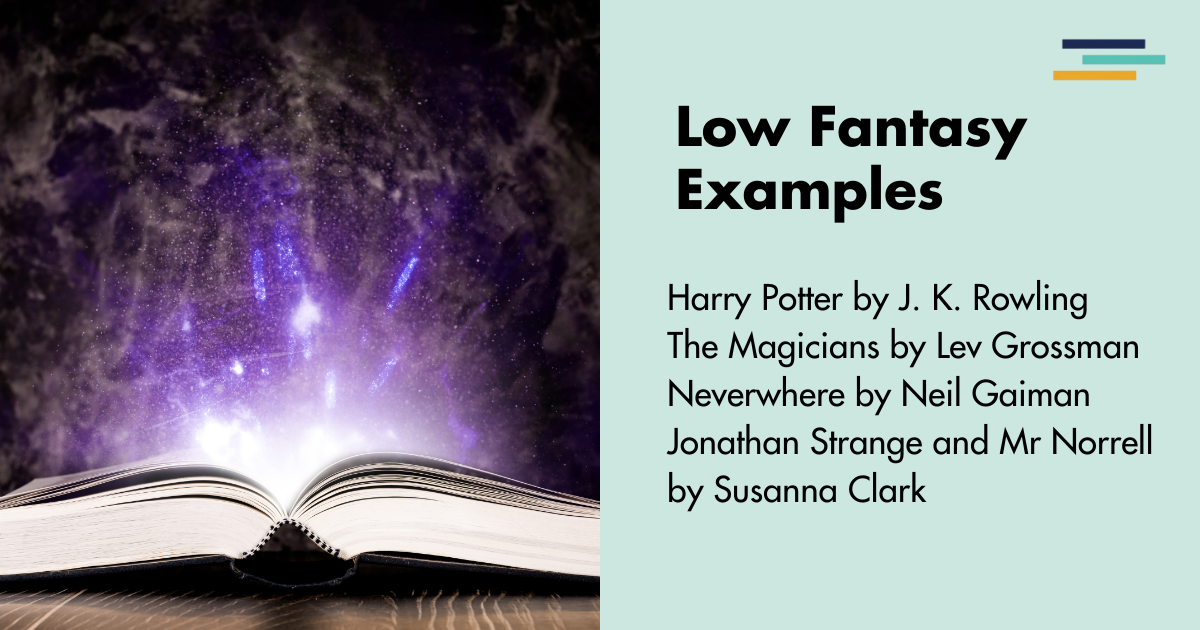
High Fantasy Examples
The Lord of the Rings by J.R.R. Tolkien
Set in the fictional world of Middle-earth, this epic saga follows the quest to destroy the One Ring and defeat the Dark Lord Sauron. The series is renowned for its detailed world-building, complex characters, and epic storylines. Middle-earth is filled with diverse races, ancient histories, and vast landscapes, creating a fully immersive high fantasy world.
A Song of Ice and Fire by George R.R. Martin
This series, adapted into the television show Game of Thrones, is set in the fictional continents of Westeros and Essos. It features intricate political plots, a large cast of characters, and elements of magic and prophecy. The series is known for its realistic portrayal of power struggles and moral ambiguity, making it a standout in high fantasy literature.
The Wheel of Time by Robert Jordan
Set in a richly detailed world with its own history and mythology, this series follows the journey of Rand al’Thor and his companions as they battle the forces of the Dark One. The books are known for their complex plot and extensive world-building. The series spans multiple cultures, magical systems, and epic battles, making it a cornerstone of high fantasy.
The Stormlight Archive by Brandon Sanderson
This ongoing series is set in the world of Roshar, a land battered by magical storms. The series is known for its intricate magic system, deep character development, and expansive world-building. The story revolves around the Knights Radiant, ancient warriors who must rise again to combat an impending apocalypse.
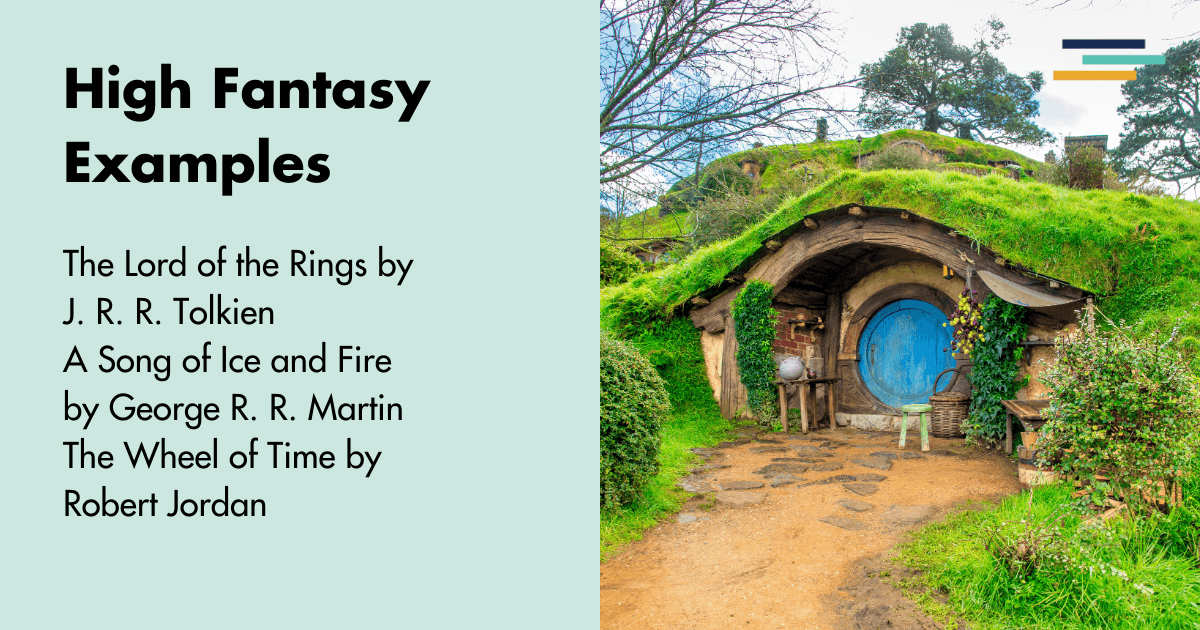
Tips for Writing Low Fantasy vs High Fantasy
Writing fantasy, whether low or high, requires a balance of creativity and coherence. Here are some expanded tips to help you craft interesting narratives in both subgenres:
Tip 1: Define Your World’s Boundaries
Establishing clear boundaries for your world is crucial in both high and low fantasy. For high fantasy, this means creating a world with distinct geographies, cultures, histories, and rules of magic.
The more detailed and consistent your world, the more immersive it will be for readers. Maps, timelines, and family trees can help you keep track of the intricate details.
In low fantasy, the challenge is to blend the magical with the mundane.
Decide how the magical elements interact with the real world and ensure that there are logical rules governing these interactions. The subtlety of magic in low fantasy means it often has profound implications for the plot and characters, making its careful integration vital.
Tip 2: Develop a Magic System
A coherent and well-thought-out magic system can enhance the believability of your story.
For high fantasy, this system should be robust, with defined sources of power, limitations, costs, and rules. For example, Brandon Sanderson’s laws of magic emphasize that the limitations of a magic system are more interesting than its capabilities. Consider how magic affects your world’s economy, politics, and social structures.
In low fantasy, the magic system should be more subdued but equally logical.
The rarity or subtlety of magic can create suspense and mystery. Ensure that the magic, when it appears, follows established rules and contributes meaningfully to the plot and character development.
Tip 3: Focus on Character Development
Characters are the heart of your story, whether it’s high or low fantasy.
In high fantasy, your characters might be destined heroes, wise mentors, or powerful villains. Their development often involves growth through epic quests, moral dilemmas, and battles. It’s crucial to show their internal struggles and growth alongside the external conflicts.
In low fantasy, characters are usually more relatable, starting as ordinary people who encounter the extraordinary.
Their development often involves navigating the challenges posed by magical elements while dealing with everyday life. Showing how they adapt, change, and grow in response to these challenges can create a deeply engaging narrative.
Tip 4: Balance the Mundane and the Magical
In low fantasy, balancing the mundane with the magical is key. The magical elements should enhance the story without overshadowing the characters’ real-world experiences.
For instance, in Harry Potter, the magical world is hidden within the ordinary world, creating a sense of wonder while maintaining the relatability of the characters’ everyday lives.
In high fantasy, the world itself is often magical, so the challenge is to make this world feel lived-in and believable.
Everyday activities, social structures, and personal relationships should still play a crucial role, grounding the fantastical elements in relatable human experiences. This balance makes the world feel real and immersive.
Tip 5: Build a Rich Backstory
A well-crafted backstory adds depth and context to your narrative.
In high fantasy, this includes the history of your world, mythologies, and the lineage of your characters. Detailed backstories can provide motivations for characters’ actions and events in the plot. For example, Tolkien’s Middle-earth has a vast history that adds depth to the narrative.
In low fantasy, consider how the magical elements have influenced the world and the characters’ lives.
Historical events, folklore, and myths can explain magic and its impact on society. This context enriches your narrative and provides a foundation for character motivations and plot developments.
Tip 6: Use Conflict to Drive the Plot
Conflict is essential in any narrative, but takes on unique forms in fantasy.
In high fantasy, conflict often involves epic battles, quests, or the struggle between good and evil. The stakes are usually high, affecting entire kingdoms or worlds. Internal conflicts, such as a hero grappling with their destiny, can add depth to these external conflicts.
In low fantasy, conflicts are often more personal and grounded in reality
The clash between the ordinary and the magical can create internal and external conflicts for your characters. These conflicts might involve dealing with magical threats in the real world, ethical dilemmas, or the impact of magic on personal relationships.
Tip 7: Explore Themes of Power and Identity
Fantasy literature often explores themes of power, identity, and destiny.
In high fantasy, characters may struggle with their roles in epic conflicts, discovering their true identities, or wielding great power responsibly. These themes are often intertwined with the narrative, providing a deeper emotional core to the story.
In low fantasy, themes of power and identity might be more subtle but equally significant.
Characters may discover hidden abilities, face moral dilemmas about using magic, or struggle with their place in a world where the supernatural exists alongside the ordinary.
Exploring these themes can provide a rich, emotional layer to your narrative.
Tip 8: Create Vivid Descriptions
Vivid descriptions bring fantasy worlds to life.
In high fantasy, this involves detailed descriptions of landscapes, creatures, and magical phenomena. Use sensory details to immerse readers in your world, making them feel the chill of a dragon’s breath or the warmth of a magical fire.
In low fantasy, use descriptions to highlight the contrast between the familiar and the extraordinary.
Describe the ordinary world in relatable terms, then juxtapose it with the subtle magic that intrudes upon it. This contrast can heighten the sense of wonder and mystery, making the magical elements stand out more vividly against the mundane backdrop.
Tip 9: Incorporate Myth and Legend
Incorporating myths and legends into your fantasy narrative can significantly enrich your world-building and add layers of depth to your story.
In high fantasy, myths and legends often form the backbone of the world’s lore, influencing current events and character motivations. These ancient stories can explain the origins of magical creatures, the history of kingdoms, and the lineage of powerful artifacts.
For instance, J.R.R. Tolkien’s The Silmarillion serves as a mythological prelude to The Lord of the Rings, detailing the creation of Middle-earth and its ancient history.
Such legends create a rich tapestry that makes the fantasy world feel alive and ancient.
In low fantasy, myths and legends often provide a sense of mystery and wonder, blending the ordinary with the extraordinary.
These elements can blur the line between the real world and the magical, creating an intriguing contrast.
For example, in Neil Gaiman’s American Gods, the old gods of mythology coexist with modern American society, their stories influencing the present-day plot in subtle yet profound ways.
This blending of myth with reality can create an interesting narrative that keeps readers engaged and curious.
Tip 10: Plan Your Plot Carefully
A well-structured plot is crucial for keeping readers engaged and ensuring that your fantasy narrative is coherent and interesting.
In high fantasy, plots often involve intricate storylines and multiple viewpoints, requiring careful plotting to ensure that all threads converge in a satisfying manner. Consider outlining major events, character arcs, and key turning points to maintain clarity and focus.
Complex plots with interwoven character arcs, like those in George R.R. Martin’s A Song of Ice and Fire, require meticulous planning to ensure that each storyline progresses logically and culminates in a rewarding conclusion.
In low fantasy, the plot often focuses on how the magical elements impact the characters’ lives and drive the story forward.
These narratives typically have a more intimate scale but are no less complex.
The presence of magic introduces unique challenges and opportunities for character development. To plan a low fantasy plot, start with a clear understanding of the characters’ goals and the obstacles they will face. Map out how the magical elements will influence these goals and create conflict.
For instance, in Lev Grossman’s The Magicians, the protagonist’s journey is deeply intertwined with his discovery of magic and its consequences, blending personal growth with fantastical elements in a carefully plotted narrative.
And finally, always remember that story comes first. Focus on:
- Creating engaging characters
- Penning interesting plots
- Structuring solid settings
A tool like Fictionary helps you turn your draft into an interesting story readers love. So, with a strong narrative foundation, your writing can truly shine.


